
Hiking the Kumano Kodo
Highlights of the Imperial Pilgrimage Routes of Japan
Trip Summary
Extending out into the Pacific Ocean just south of Osaka and Kyoto, the southern mountainous region of the Kii Peninsula was once referred to as Kumano and regarded as a mystical “holy ground where gods dwell.” A region of spiritual and cultural significance, it was here at Gotobiki Rock that the three “spirits of nature”, or kami, were thought to have alighted from heaven to reside on earth. And, it was here that Jimmu, the first Emperor of Japan and descendent of Amaterasu the sun goddess, is thought to have been guided through the mountains by the mythical three-legged crow of the Kumano on his quest to unite the country.
Over the centuries, the three Grand Shires of Hongu-Taisha, Hayatama-Taisha, and Nachi-Taisha were constructed to honor each of the kami and the Kumano faith evolved as an embracing of both a Shinto reverence for the sacred in nature and the arrival of Buddhist teaching. Imperial pilgrimages to the three grand shires, known collectively as the Kumano Sanzan, began in the 11th century. Starting in the ancient city of Kyoto, these journeys would often take 30 – 40 days and require an entourage of up to 800 people.
While the popularity and accessibly of these pilgrimage routes have ebbed and flowed throughout the ages, today the Kumano Kodo (Kodo meaning “old ways”) is recognized as one of only two UNESCO World Heritage-listed pilgrimage routes.
During this 14-day journey, beginning in Osaka and ending in Kyoto, we’ll experience the historical, cultural, and spiritual significance of the Kii Peninsula as we follow the old imperial ways to the sacred sites of the Kumano region.
From Osaka, we’ll travel south to Mount Koya, the home of the Shingon (Pure Word) Sect of Esoteric Buddhism. After spending the night in one of the 117 temples in the area, we head south deeper into the Kii Mountains where we’ll hike the Nakahechi, one of the Kumano Kodo routes to the Three Grand Shrines. After visiting the village of Yoshino home to the Kimpusenji Temple, we’ll head out of the mountains to the ancient capital city of Nara, stopping en route to hike along historic Yamanobe-no-Michi. Our journey will end with a day spent in the cosmopolitan and truly fascinating city of Kyoto.
Along the way, we’ll immerse of selves in the Japanese way of travel, staying in old-world traditional Japanese inns called ryokan, bathing in hot spring onsens, and perfecting our chopstick skills as we enjoy classic Japanese cuisine. Join us for an unforgettable journey through this remote and mystical corner of Japan!
Hiking the Kumano Kodo Itinerary
Day 1: Arrive Osaka
Rendezvous at our hotel in Central Osaka. The trip will officially begin at 6:00 pm at our hotel with an orientation meeting followed by our welcome dinner.
Day 2: Osaka to Mount Koya
Following breakfast, we’ll travel south by train and funicular to Mount Koya, the home of the Shingon (Pure Word) Sect of Esoteric Buddhism. Founded in 816 AD by Kobo Daishi, there are 117 temples on Mount Koya today. Kobo Daishi is believed to sit in eternal meditation here at the Okunoin Inner Sanctuary. After lunch, we’ll have a short hike along the Nyonindo, a route through the woods surrounding the temple area. We’ll spend the night in one of the 54 shukubo temples which accept lodgers.
Distance: about 6 miles; Time: 1½ - 2 hours.
Note: For this night, the group will be staying at a Shukubo temple. The temples offer simple traditional rooms with shared facilities. Our luggage will not meet us for this night; therefore, group members will need to carry a few extra items for the night in their daypacks. Temples usually provide yukata, a simple kimono, that can be worn to the baths and meals.
Day 3: Mount Koya and Ryujin Onsen
We will rise early this morning to participate in a sutra recital ceremony conducted daily, primarily in memory of ancestors and previous generations of priests. After breakfast (all food in the temples here is vegetarian – shojin ryori), we’ll have a guided walk of the most important sites on Mount Koya, including the cemetery with its huge cedar trees and 200,000 or so stone memorials. In the afternoon we’ll travel south by road deeper into the Kii Mountains via the Ryujin Skyline. Our destination is Ryujin Onsen and our family-run ryokan for the night. We’ll have the opportunity to experience their delightful, natural hot spring baths.
Distance: about 4 miles; Time: 3 - 3½ hours.
Day 4: Ryujin Onsen to Yunomine Onsen
After breakfast, we travel to the start of the Nakahechi pilgrimage route, one of the ancient imperial routes to the Kumano Sanzen. After visiting the information center and small shop at Takejiri, we’ll continue the short distance by road to the start of our hike at Takahara Kumano Jinja Shrine. The trail today is through dense forest, following ridges and valleys, past small wayside shrines to the village of Chikatsuyu, from where we go by road to our family-run lodgings in Yunomine Onsen.
Famous for its hot springs, the use of Yunomine Onsen, as a spot for purification rituals before continuing to the Hongu Taisha, is thought to date back 1,000 years. The hot springs here actually merge into the stream which runs through the village nestled in a narrow valley.
Elevation gain: 2,300’; Elevation loss: 2,050’; Distance: about 8 miles; Time: 5 – 6 hours.
Day 5: Hosshinmon-Oji to Yunomine via Hongu
In the morning, we’ll rejoin the Nakahechi trail at Hosshinmon-Oji, one of the five major Oji, or smaller shires, along the route. It once marked the outermost boundary of Hongu Taisha sacred precinct and was called “the gate of awakening of aspiration to enlightenment.”
Today our destination is Hongu Taisha, or Grand Shrine, the first of the three Kumano Sanzen. Our route takes us through isolated mountain settlements and dense cedar forests, occasionally along old flagstone ways, with short stretches of quiet road here and there. After visiting the shrine and Heritage Center, we’ll hike over a low mountain, with a rather steep climb to the Dainichigoe Pass, and back to our lodging in Yunomine.
Elevation gain: 1,452’; Elevation loss: 2,145’; Distance: about 4-6 miles; Time: 3 or 5 hours.
Day 6: Ukegawa to Koguchi
Our day begins with a short transfer to the little village of Ukegawa where we’ll join the pilgrimage route once again. This section of trail from Ukegawa to Koguchi is called the Kugumotori-goe. Referring to the elevation of the route, kogumotori means “passing over small clouds.” This is a route of meandering forest trails, abandoned teahouses, and panoramic views.
Following the contours of the mountainside, we’ll eventually arrive at Hyakken-gura overlook with a view said to encompass the 3,600 peaks of Kumano. There actually aren’t 3,600 peaks, however, the expression is meant to convey the vastness of these sacred mountains. Descending, sometimes steeply, our hike ends in the valley along the banks of the Akagi River not far from the village of Koguchi. From here, we transfer to our hotel for the evening.
Elevation gain: 2,211’; Elevation loss: 2,227'; Distance: about 8.5 miles; Time: 5 hours.
Day 7: Koguchi to Nachi Katsuura
Today we’ll visit Nachisan sanctuary, an area encompassing Kumano Nachi Taisha, the second of the three Grand Shrines that make up the Kumano Sanzan, the Buddhist temple of Seignato-ji, and Nachi Waterfall. A traditional approach to the shrine is by the Daimonzaka, or “Great Gate Slope”. This atmospheric, broad cobblestone path climbs 267 stairs through an ancient cedar and camphor forest to reach the shrine. After exploring the area, our day will end with a transfer to the oceanside town of Katsuura.
Elevation gain: 300’; Elevation loss: 300’; Distance: about 3 miles; Time: 2 hours.
Day 8: Nachi Katsuura to Dorogawa Onsen
Our day will begin with a transfer to Hayatama Taisha, the last of the three Grand Shrines. It is believed that this shrine was built in 128 to enshrine the Kumano deities who first descended to earth on nearby Gotobiki-Iwa rock. Near the entrance to the shrine is an ancient sacred Nagi tree, a conifer believed to be almost 1,000 years old and the oldest tree of its kind in Japan.
We now start making our way back north toward Kyoto, driving north through the mountains of Kamikitayama Village, a sparsely populated area, and the largest village administrative district in Japan. Our destination is Dorogawa Onsen deep in the heart of the West Yoshino mountains. The hot spring village is closely associated with the Shugendo mountain priest En no Gyoja, and the demanding Omine Okugake pilgrimage route which runs along the spine of high mountains between Yoshino and Hongu.
There will time for a short walk to stretch our legs and look around before a wonderful hot spring bath and dinner at our very special, beautifully appointed ryokan. Founded more than 500 years ago, the inn’s owner is the 17th generation of the family!
Day 9: Dorogawa to Tawaramoto
After breakfast, we’ll travel to Yoshino. In spring the mountainside is covered with thousands of cherry trees in blossom. Brilliant green in late spring and early summer, the autumn colors appear in October. Our hike down through the village starts from the site of poet-priest Saigyo’s hut. A 12th-century Buddhist priest-poet, Saigyo is said to have lived in this humble dwelling for three years. We’ll visit the Kimpusenji Temple, a World Heritage site and the main temple of the Shugendo Sect of mountain priests, before a lunch featuring delicious Yoshino kuzu noodles.
We’ll then head for Tawaramoto, a town set in the heart of the flat Yamato Plain not far from the city of Nara. Our accommodation for the night is a 130-year-old soy sauce warehouse that has been transformed into a small hotel. The production of soy sauce has also been revived on the premises by the 18th generation of the original owners. |
Elevation gain: 630’; Elevation loss: 1,814’; Distance: about 3 miles;Time: 2 hours.
Distance: about 5 mile; Time: 2.5 hours.
Day 10: Miwa to Nara
Today we’ll hike a section of the Yamanobe-no-Michi Trail. The trail runs north and south along the eastern edge of the Nara Basin and was once part of the Shinkiado, Japan's oldest road, according to written records dating back 1,000 years. After a short transfer, we’ll begin the hike at Miwa Shrine. As it winds through the countryside the trail is dotted with temples, shrines, cafes, fruit stands, and small hamlets. Our walk ends at Isonokami Jingu Shrine from where we’ll transfer to our hotel in Nara.
Elevation gain: 957’; Elevation loss: 997’; Distance: about 8 miles; Time: 5 hours.
Day 11: Nara
Today we’ll be joined by a local guide, an expert in the history and culture of Nara. Nara was Japan’s first permanent capital established in 710, and as such is home to many important temples and shrines as well as fine gardens, museums, and traditional neighborhoods. This will be a full day of exploring Nara, including visits to the Kasuga Taisha Shinto shrine, Nara Park, the great Todaiji Temple, and the old town. We’ll also enjoy a traditional Japanese tea ceremony.
Day 12 & 13: Kyoto
From Nara, we’ll transfer to Kyoto by road and spend the next two days experiencing this amazing city. With 17 UNESCO World Heritage sites, it's no wonder Kyoto is considered the cultural center of Japan. The capital city of Japan from 794 - 1968, behind its now modern, contemporary exterior vestiges of old-world Japan are everywhere. Our explorations of Kyoto may include the Ginkakuji Silver Pavilion and its garden, the Philosophers Walk, the Nishiki Koji indoor market, and a trip to the Miho Museum designed by I.M. Pei. The day will be capped off by our farewell dinner.
Day 14: Depart - Onward travel
The tour officially ends after breakfast. Members may transfer for flights home, stay on in Kyoto, or continue their journey in Japan. Rail transfer to Kansai International Airport from Kyoto is easy and direct, taking about 70 minutes.
- Please note: This itinerary is subject to change prior to the trip start or en-route.
Additional Information
SOLO TRAVELERS
If you wish to have your own room, there is a single room supplement fee of $950. Please let us know at the time of registration if you would like a single room. Single rooms are limited.
If you are traveling alone and would like to share a room, we will match you with a roommate. If there is no one with whom you can share, a “forced” single" fee of $600 will apply.
INCLUDED
- All accommodations
- All meals
- All group transfers from start to end of the tour as described in the itinerary, by private vehicle or train
- Luggage transfers
- Guides
- Entries and activities as specified in the itinerary
- Great hiking and happy memories!
NOT INCLUDED
Airfare, optional/individual transfers or excursions, items not on set dinner menu, beverages, insurance, tips to guides/leaders, items of personal nature (phone calls, laundry, excess baggage charge, passport fees, etc.).
LUGGAGE
The trip is vehicle-supported. This means most days you will need only carry a daypack with those items you will need during the day’s hike. Each day, our luggage will be transported ahead to our night's accommodation, with the exception of Day 2 when we will be staying at a Shukubo temple. We suggest a 30-liter pack or one large enough for those additional items you will need for our night at the temple. We ask that each participant bring one medium size piece of luggage, preferably with wheels. Japanese inns tend to have narrow corridors and steps rather than elevators, so bear this in mind.
ACCOMMODATIONS AND FACILITIES
We will be staying at a range of accommodations during this trip, including hotels, temples, and ryokans. Some of our accommodations may be western-style while others will be more traditional Japanese inns called ryokans. When possible, we will “go Japanese” staying in Japanese-style rooms. These rooms are usually spacious and double occupancy with woven tatami mat floors, low tables, and futon beds with warm comforters.
Most accommodations will be “ensuite” with shower/bath and toilet facilities in the room; others will have shared facilities on the floor. Some ryokan may have baths or showers in the room, but most will have an onsen or o-furo (Japanese-style bath). Most accommodations will provide yukata, simple cotton robes, used for wear to the onsen, and meals. Meals at the ryokans may be served at low tables with seating on pillows on the floor. Slippers are generally provided at the entrance of the accommodation for use everywhere, except for in tatami rooms. You might like to bring your own (probably more comfortable!) slippers.
Rooms are double/twin occupancy unless a single is requested. Single rooms cannot always be guaranteed in temples and ryokan, but we will endeavor to secure these where possible.
Japanese Baths: Japanese baths (o-furo) and natural hot springs (onsen) offer a unique and wonderful cultural experience if sometimes a challenge for the unprepared!
A centuries-old tradition, there is a three-step process to taking a Japanese bath. Communal o-furo and onsen will have a changing room, a shower room, and the bath or hot spring. All clothing and belongings are left in individual baskets or lockers in the changing room. Showering with soap and thoroughly rinsing is done before entering the bath “au naturel” to relax. Baths are always separated into men’s and women’s areas.
Most, but not all, of our accommodations have their own onsen, hot spring bath. There are 4 nights on this trip where accommodations may have shared bathing and toilet facilities; Days 2, 4 & 5, and Day 8. This is not uncommon in traditional inns in Japan. The onsens and shared toilets facilities are spotless, of course, have cubicles, and are adjacent to the rooms across a corridor.
Meals: The Japanese diet is quite different from ours. Most meals, including traditional Japanese breakfasts, consist of rice, miso soup, tofu, fish, and an amazing array of small dishes of pickled vegetables, and vegetables in broth. Sashimi, raw fish, or sushi may be served as well as other meat dishes. Western-style breakfasts may be available at some of our accommodations. Delicious Japanese food is definitely a highlight of this tour. Brush up on your chopstick skills! Some meals will be in tatami mat rooms with low tables, again traditional in Japan.
TRAVEL
Osaka’s Kansai International Airport is most convenient to the start and end of the trip. It is also possible to fly in and out of Tokyo, you need only allow for additional travel time.
MEETING POINT
The group will meet at about 6:00 pm on Day 1 at our hotel in central Osaka.
ENDING POINT
The trip will end after breakfast at our hotel in Kyoto on the last day of the trip, Day 14. Rail transfer to Kansai International Airport from Kyoto is easy and direct, taking about 70 minutes. Access is more or less directly from the train platform into the airport.
ABOUT THIS TRIP
Our Hiking the Kumano Kodo trip is a relatively new trip, and we are happy to be working in collaboration with Bob Hefill, a professional freelance translator and founder of Hike Japan. Bob has been organizing and running trips in Japan since 2003 and is eager to infuse our trip with his knowledge of and enthusiasm for Japan and its culture. For those interested in joining us on this trip, don't forget to bring along your flexibility, good humor, and love of adventure and discovery!
WHO WOULD LIKE THIS TRIP
This trip is as much a cultural experience as it is a hiking and walking trip. It would be a fabulous experience for any fit, active traveler, but especially for those who have hiked or walked in other parts of the world but have yet to travel to Japan. While the hiking routes may not feel as extensive or remote, nor the landscapes as expansive as those in the Rockies or European Alps, the cultural aspect adds an intriguing and captivating dimension. Very basic things, like eating and sleeping, can be quite different in Japan. Breakfast might look very much like dinner, and getting up and down off a futon on a tatami mat floor can be an interesting new exercise. The Japanese are generally extremely polite and respectful. Certain social etiquettes require more mindful attention than others, such as bathing at hot springs, and less inhibition. An openness and willingness to try new things is an essential and rewarding part of this journey.
WHAT MAKES THIS TRIP DIFFERENT
Many things! The tour is designed to provide some great hiking experiences as well as insights into Japanese history and culture. The itinerary highlights some of the most interesting and rewarding sections of the Kumano imperial pilgrimage routes, with visits to many of the most important sacred sites in the Kii Peninsula. The other destinations we’ll visit - Yoshino, Asuka, Nara, and Kyoto, are all significant in gaining a good understanding of pilgrimage routes in this part of Japan and how Japanese culture developed in the Yamato area around Asuka, Nara, and Kyoto. We’ll gain insights into Japanese culture other visitors rarely have. Highly experienced guides, carefully chosen lodgings, some with onsen - wonderful natural hot spring baths, and delicious Japanese food, all contribute to making this tour truly special.
MORE INFORMATION
Please contact us for a more detailed itinerary, for more information, or to register.
How to Reserve This Trip
A deposit of $500 along with your completed registration forms will reserve a space on your requested trip. We accept MasterCard, Visa, and American Express card as well as personal checks. To make a deposit, you may either follow one of the “Reserve a Trip” links below, give us a call at 1-888-845-5781, or include your payment information in the area provided when completing your registration forms.
The balance is due 90 days prior to departure for most of our trips. When applying less than 75 days prior to departure, full payment is due. For final payments, we accept MasterCard, Visa, and American Express, as well as personal checks.
As confirmation of receipt of your deposit, we will send you a comprehensive packet of information pertaining to your trip, an invoice for final payment and additional information including release agreement form, medical information form, travel information, and packing list. Upon receipt of final payment and no later than 30 days prior to your trip start, you will receive trip rendezvous information and a list of accommodations. Returning trip participants will receive a 5% discount on most trips.
Receipt of all forms will finalize your registration.
Related Trips
 James Herriot Way
Walk the Landscapes of All Creatures Great and Small - Yorkshire Dales Inn-to-Inn
James Herriot Way
Walk the Landscapes of All Creatures Great and Small - Yorkshire Dales Inn-to-Innmore
 Scotland's West Highland Way Hike
Scotland's classic long-distance route from Glasgow to Ben Nevis
Scotland's West Highland Way Hike
Scotland's classic long-distance route from Glasgow to Ben Nevismore
Testimonials
"Past experience – I knew any trip with D.J. would be well planned. Location- when I saw the trip to Japan I wanted to go. Small women owned business in Maine- love the concept.”
Nancy C., CO
Moderate, Strenuous
Reserve Your Spot
How to Reserve This Trip
A deposit of $500 along with your completed registration forms will reserve a space on your requested trip. We accept MasterCard, Visa, and American Express card as well as personal checks. To make a deposit, you may either follow one of the “Reserve a Trip” links below, give us a call at 1-888-845-5781, or include your payment information in the area provided when completing your registration forms.
The balance is due 90 days prior to departure for most of our trips. When applying less than 75 days prior to departure, full payment is due. For final payments, we accept MasterCard, Visa, and American Express, as well as personal checks.
As confirmation of receipt of your deposit, we will send you a comprehensive packet of information pertaining to your trip, an invoice for final payment and additional information including release agreement form, medical information form, travel information, and packing list. Upon receipt of final payment and no later than 30 days prior to your trip start, you will receive trip rendezvous information and a list of accommodations. Returning trip participants will receive a 5% discount on most trips.
Receipt of all forms will finalize your registration.
Testimonials
"Past experience – I knew any trip with D.J. would be well planned. Location- when I saw the trip to Japan I wanted to go. Small women owned business in Maine- love the concept.”
Nancy C., CO
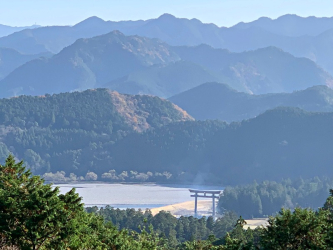
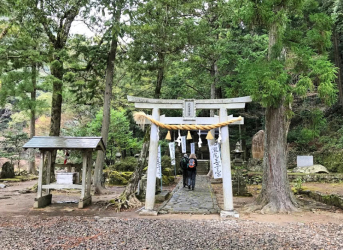
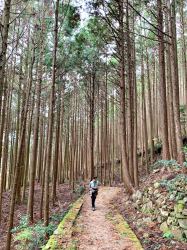
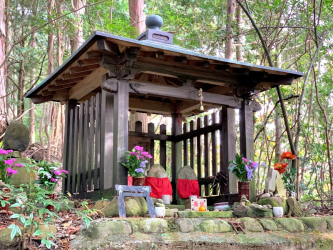
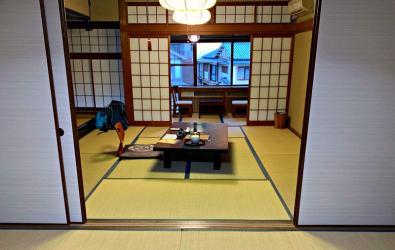
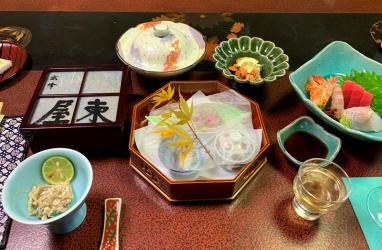
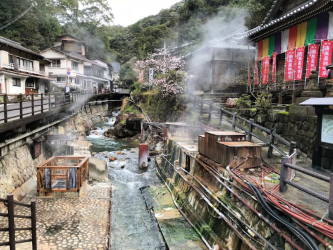
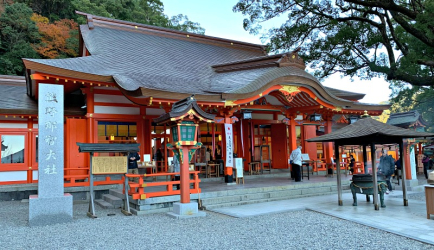
 Colors of Provence Hike
Colors of Provence Hike
 Dordogne on Foot - France Walking Tour
Dordogne on Foot - France Walking Tour